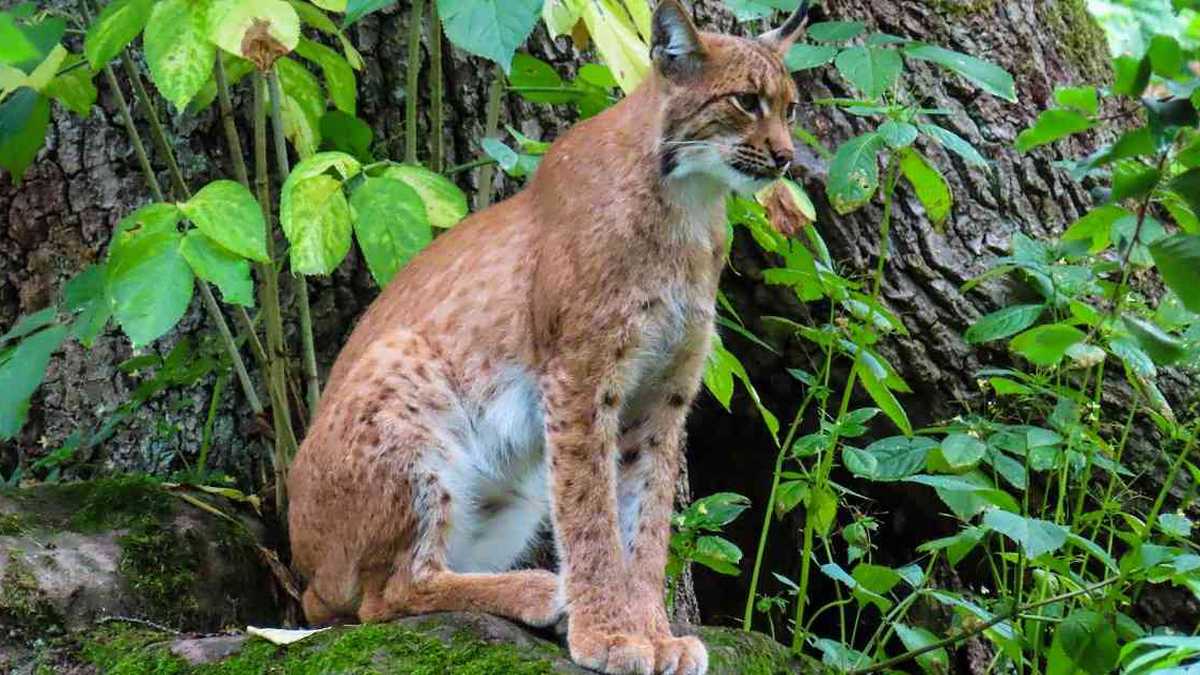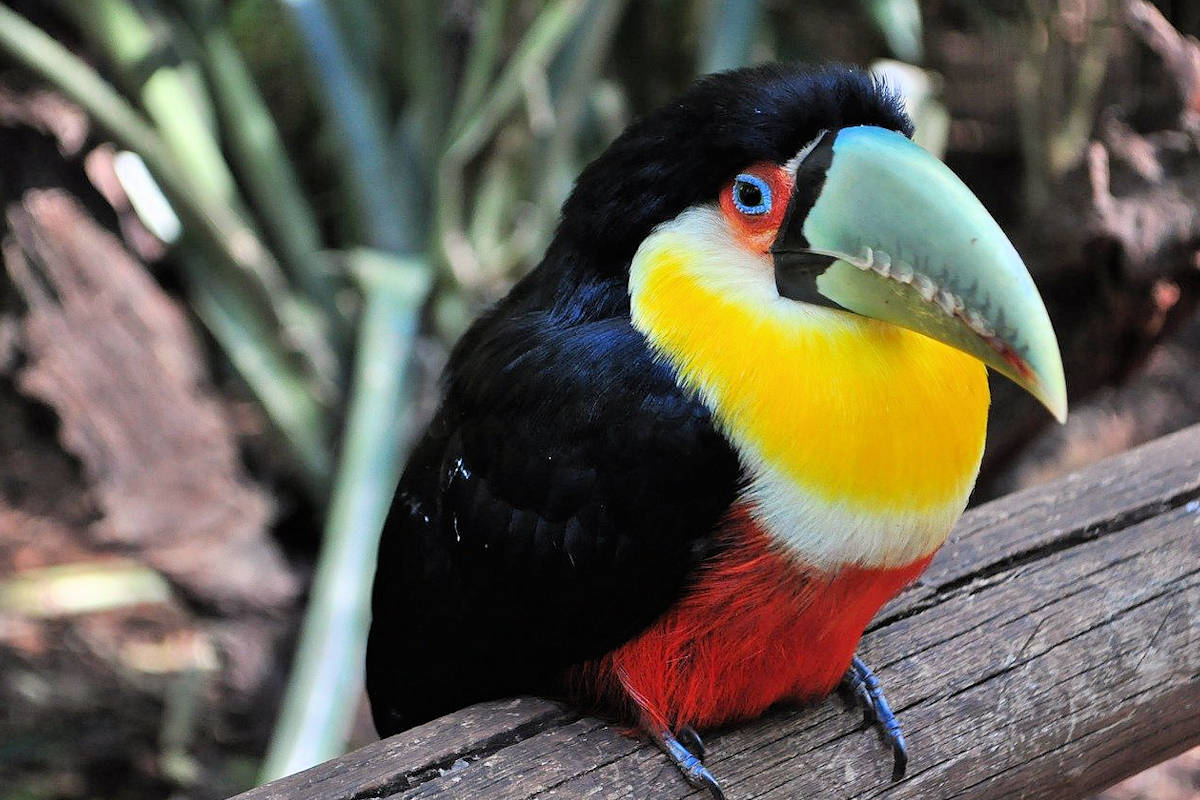
There are different types of ecosystems where animals live and develop. In this case, Forest animals they have developed and adapted to this environment in order to optimize their survival. There are many species that inhabit the forest and each one of them has its unique peculiarity.
In this article we are going to tell you about all the characteristics, way of life and evolution of the animals of the forest.
Key features

Forest animals are those that derive their habitat from the forest biome. That is, at different latitudes of our planet, trees and bushes are more or less dense. Since no ecosystem by itself can be called a "forest", but both tropical rainforests such as the arctic taiga are united under the term, Forest animals include a wide variety of species.
Forests, as we know them, are very important for life. On the one hand, they house more or less diverse animal species that integrate food or nutrient circuits, whether in their branches, roots, trunks or around their flowers and fruits. On the other hand, they produce large amounts of atmospheric oxygen, they also fix carbon from carbon dioxide and keep the Earth's climate stable.
Forest animals according to ecosystems

There are different types of ecosystems within forests and there are different species related to them. Let's see what each of them are:
- Tropical and subtropical moist leafy forests or Rainforest: Frogs, toads, butterflies, spiders, snakes, apes, insects, exotic birds and mammals live here.
- Tropical and subtropical dry forests: Felines, birds, abundant mammals such as deer, mice, dry climate snakes, smaller monkeys such as chimpanzees and all kinds of insects live here.
- subtropical coniferous forests: They are also known by the name of pine forest. Here we find animals such as birds of prey, other beasts of burden, larger felines such as tigers, small apes and mammals such as sloths.
- Temperate and mixed forests: we can find from deer, wild boar, squirrels, eagles, smaller snakes such as coral, canids, etc.
- Temperate coniferous forests: In these ecosystems we can find species such as moose, foxes, lynx, deer, hawks and some small species of reptiles.
- Boreal forests or taigas: we can find large bears, wolves, birds of prey such as eagles, mountain fish such as salmon, marmots, etc.
- Mediterranean forests: In these ecosystems, all kinds of birds develop, such as the girls, waders, predators, other species of mammals such as mountain goats, predators such as brown bears, reptiles and amphibians.
- Mangroves: Animals such as fish of various kinds and smaller, crabs and bivalves such as oysters and mussels, fishing birds, caimans and crocodiles develop in these ecosystems.
Forest types
There are many ways to classify forests, but to see which is the most important for the study of forest animals, pay attention to the method proposed by the WWF (World Wildlife Fund) to classify forests into biomes:
- Tropical and subtropical moist leafy forests or rainforests. They are located in the tropics and exhibit dense, tall, permanent tree structures in tropical and temperate climates with high humidity and rainfall.
- Tropical and subtropical dry leafy or dry forests. Located in tropical and subtropical latitudes, they alternate short periods of seasonal rains with long periods of drought, with semi-dense or dense vegetation.
- Subtropical coniferous or pine forests. It is distributed mainly in areas with a semi-humid subtropical climate, with a long dry season and low rainfall, mainly mixed coniferous and broadleaf forests.
- Leafy and mixed temperate forests. Typically temperate climates, with great diversity of temperature and rainfall, present mostly angiosperms (flowering plants), often mixed with deciduous species and laurels.
- temperate coniferous forests. Evergreen vegetation, generally at high altitudes (such as subalpine forests), are common in temperate climates with hot summers and cold winters, abundant rainfall, and predominance of conifers.
- boreal forest or taiga. These are mainly coniferous forests, although there are occasional mixed forests, located near the polar circle, and therefore they face cold climates with mild summers and mild winters and severe winters, where moisture losses are very high and the species have to adapt.
- Mediterranean forest or durissilva. As its name indicates, these plants are from a typically Mediterranean climate, with abundant spring rains nourishing the trees and shrubs in a climate of dry summers, warm autumns and mild winters, nourishing the plants. They are always on the western front of the continent.
- Mangroves. Plant aggregates of species highly resistant to salt and water, abundant in the intertidal zones or estuaries of the tropical or subtropical regions of the planet. They present an enormous biological and amphibian diversity.
animal characteristics

Animals that live in cold forests: Animals that live in cold forests are mainly characterized by having thick fur with a very thick layer of fat to keep them warm in low temperatures.
Animals that live in the tropical forest: Animals that live in the tropical forests they don't have such rich furQuite the contrary, because in these forests humid and warm climates predominate.
Animals that live in the tropical forest: The animals of the tropical forests can climb tall trees, which is characteristic of this ecosystem. In general, forest animals adapt to the changes and characteristics of each ecosystem in which they live.
Food
As with traits, how forest animals feed will depend on the biome they spawn in, as they it depends on the climate, the flora and other types of animals that inhabit it.
For example, bears that inhabit forests with extremely low temperatures and very harsh winters tend to hunt and eat as much as possible during the other seasons to enter the hibernation phase, during which they will sleep throughout the winter, so don't waste your Energy.
Other animals choose to migrate to similar forests to feed properly during the cold winters. On the other hand, regardless of the type of forest, all animals develop strategies to survive in them, such as hunting, fishing or gathering.
I hope that with this information you can learn more about the different animals of the forest and their characteristics.